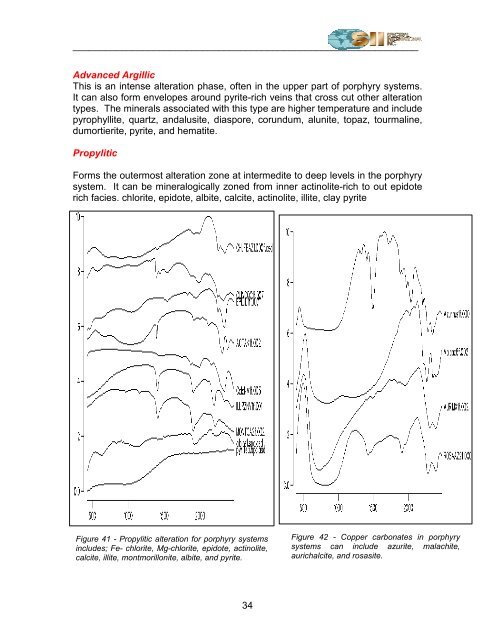An overview of vis-nir-swir field spectroscopy - Spectral International
An overview of vis-nir-swir field spectroscopy - Spectral International
An overview of vis-nir-swir field spectroscopy - Spectral International
Create successful ePaper yourself
Turn your PDF publications into a flip-book with our unique Google optimized e-Paper software.
________________________________________________________________<br />
Advanced Argillic<br />
This is an intense alteration phase, <strong>of</strong>ten in the upper part <strong>of</strong> porphyry systems.<br />
It can also form envelopes around pyrite-rich veins that cross cut other alteration<br />
types. The minerals associated with this type are higher temperature and include<br />
pyrophyllite, quartz, andalusite, diaspore, corundum, alunite, topaz, tourmaline,<br />
dumortierite, pyrite, and hematite.<br />
Propylitic<br />
Forms the outermost alteration zone at intermedite to deep levels in the porphyry<br />
system. It can be mineralogically zoned from inner actinolite-rich to out epidote<br />
rich facies. chlorite, epidote, albite, calcite, actinolite, illite, clay pyrite<br />
Figure 41 - Propylitic alteration for porphyry systems<br />
includes; Fe- chlorite, Mg-chlorite, epidote, actinolite,<br />
calcite, illite, montmorillonite, albite, and pyrite.<br />
34<br />
Figure 42 - Copper carbonates in porphyry<br />
systems can include azurite, malachite,<br />
aurichalcite, and rosasite.


